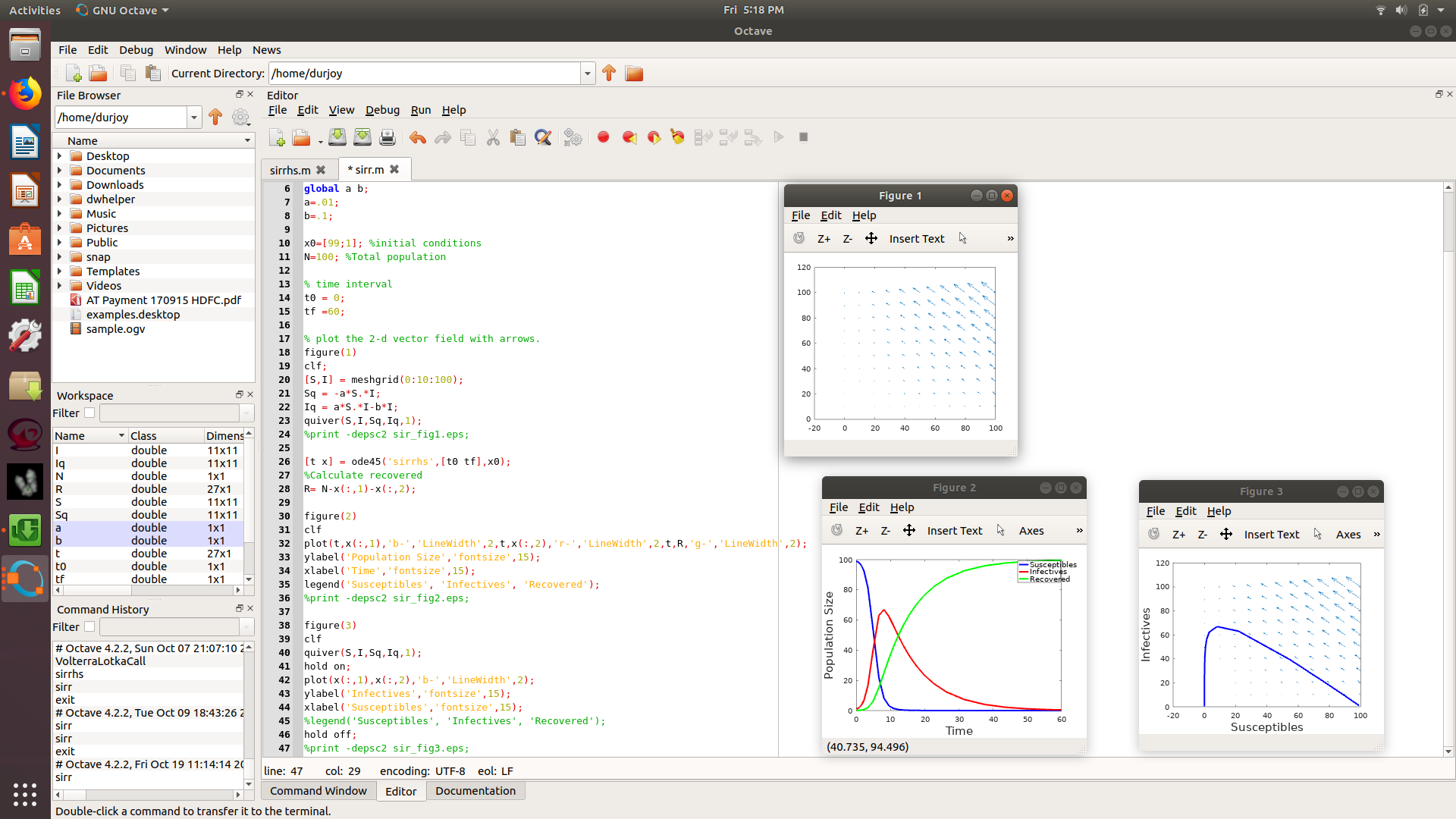- Congratulation Ms. Das & Dr. Majumder for publication of CDD Portal
- Congratulation Dr. Das & Dr. Majumder for the paper in J Biomol Struct Dyn 2022
- SSBTR is 80G Certified Society
- SSTR members published a policy paper on Translational Research
- SSBTR received 12A Certificate
- SSBTR Members published a Policy Paper on Systems Medicine Education for Developing Countries
- Congratulation SSBTR Members for publishing a Policy Paper on Systems Medicine
- Congratulation Mr. Dhar & Dr. Majumder for publishing research report on leukemia treatment
- Here, in this section we will be intermittently displaying the achievements of our hon'ble members so stay tuned and keep watching this space.

Society for Systems Biology & Translational Research



|
 click image to zoom | LEARNING MODULE : S I R MODEL BY OCTAVE program authored By : Durjoy Majumder, West Bengal State University, SSBTR SIR epidemic model coding in Octave see details coding in SSBTR Think Tank dated 2018 October 19. Enjoy!!! Below is the theoretical background. It is an epidemic model. it is also called SIR model, proposed by Kermack and Mckendrick in 1927 when studying the propagation law of the Black Death in London from 1655-1666 and the plague in Mumbai in 1906. dS(t)/dt = − αS(t)*I(t), A basic assumption of above model is that the birth and the death was not considered in a closed environment and there is no inflow and outflow in the system, then the total number of the individuals keeps constant. Further, it is supposed that the infected individuals have permanent immune capacity after the cure. If the individuals suffer from a certain incurable epidemic, then the corresponding model degenerates to the following SI model, If the individuals suffer from a certain curable epidemic, but have no immune capacity after cure, then the corresponding model should be following SIS model, If the individuals suffer from a certain curable epidemic and have a temporary immune capacity after cure, there are a number of δR(t) removed will become infected again per unit time, then the corresponding model can be described by following SIRS model, If the infected individuals have permanent immune capacity after the cure, then the corresponding model becomes following SEIR model, Last Updated On : 18th May, 2019 9:12 PM View Other Publications |
| « News Update » |
|
